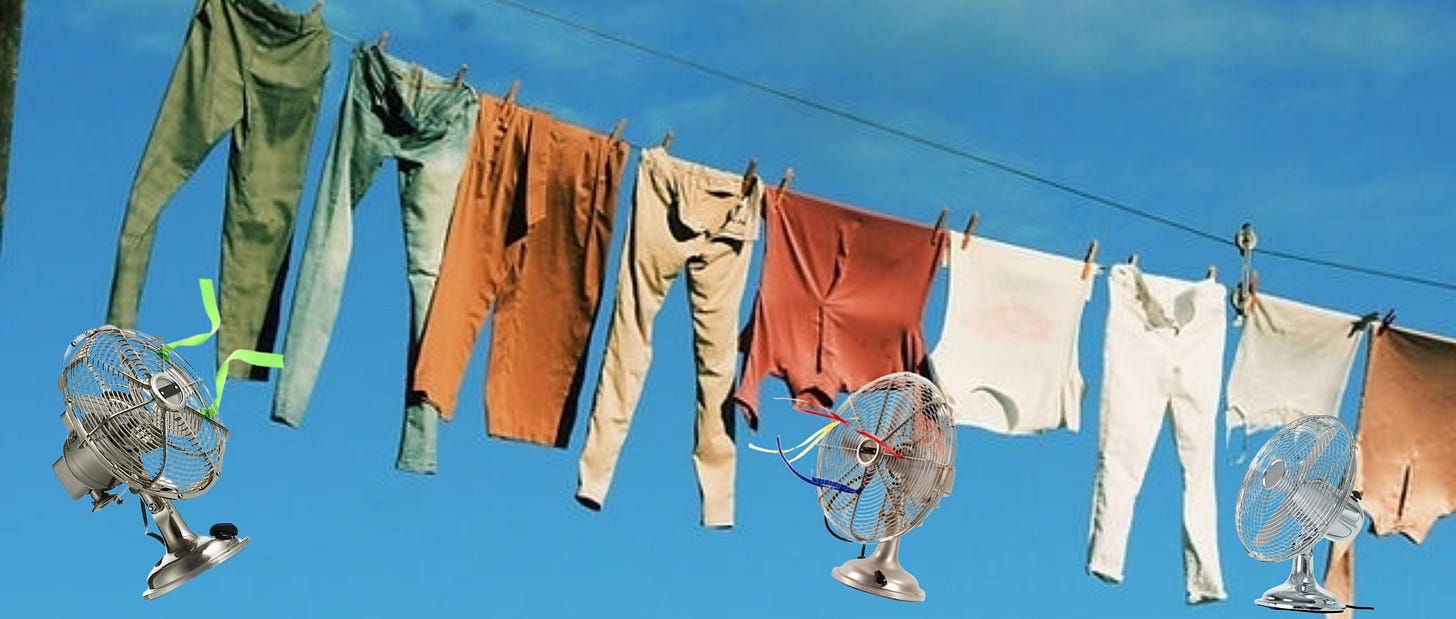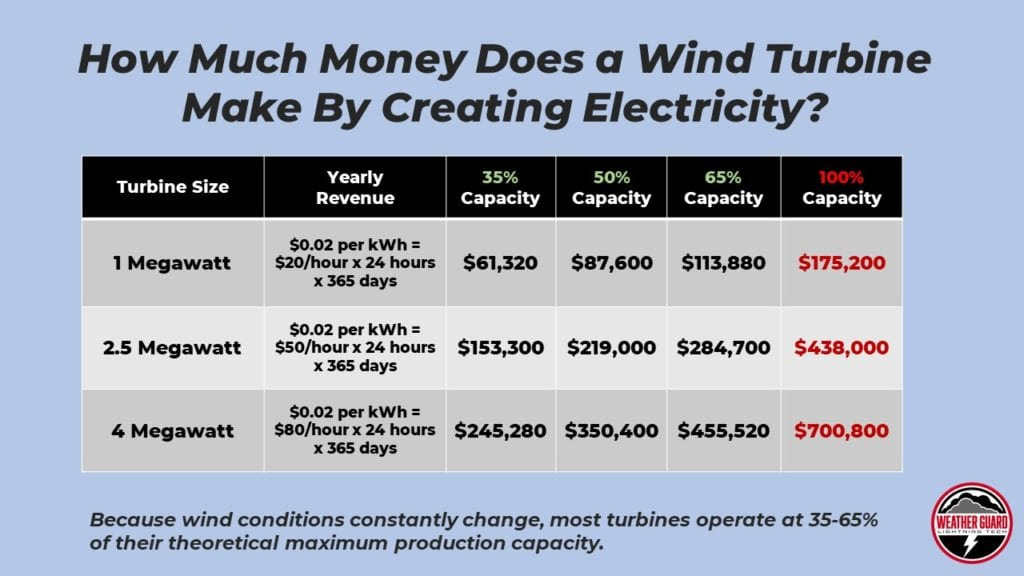Every time I have a discussion about “green energy” (specifically solar and wind) with people online, there's always the inevitable one or two people who insist that solar and wind have to be cheaper than fossil fuels because sunlight and breezes are free. You can check out Our Energy Privilege if you’d like to read about what inspired this.
It's proven to be a daunting task to explain to these types of individuals that yes, the wind may be free, but the power it provides (at least in terms of electricity) is anything but free. It’s entirely possible these same people think that tap water is also free because they can just turn it on and fill up as many jugs as they want, while they conveniently forget that they’re still paying their water bill every so often, or that it's at least included in the rent they pay.
There's lots of info out there on the cost and benefits of wind power, and I'm not about to attempt a major study here, but I’ve noticed that the info that gets quoted the most is usually big on potential, and soft on reality. The articles that talk about the actual details are usually long and boring, so let's just look at one analysis of the situation.
I recently came across this article:
Wind Turbine Cost: How Much? Are They Worth It In 2022
The article is a couple years old now, so that's worth considering, and it’s from Weatherguard Lightning Tech, which seemingly could be considered a “Windpower-friendly” company, since a good portion of its business seems to come from the wind turbine industry. The company apparently provides protection against lightning strikes, and presumably that would be a legitimate concern to the owners of very tall things that are also made of metal. Obviously, they're trying to sell their services to others in this field, so it seems like they're being careful not to be overly critical of the industry. The reason I say this is because they never directly answer the question in the title. Evidently that’s left up to you and me, so let’s get at it, shall we? I'm sure there are other analyses out there, so if you know of any, feel free to share that in the comments.
According to Weatherguard and its sources, the average cost of one of these wind turbines is $2.6 – $4 million per unit, depending on the size. Typical cost is about $1.3 million per megawatt (MW) of electricity-producing capacity. Also, the expectation is that these things will produce on average from 30% - 40% of their full capacity.
This article puts the typical annual operation and maintenance cost at between $42,000 and $48,000/MW per year for the first ten years in the United States. After that, presumably the cost would only go up. Here's another one that puts this figure at about 1.5-2% of the initial cost of the turbine. For the purposes of this admittedly simple study, I've chosen to use 1.5% of the initial cost since that is the most economic method for each turbine.
To be viable, these things need to make money. If they're not making money, then that's because they're not charging enough for the electricity being produced.
The above chart assumes a cost of 2¢ per kWh. That sounds pretty good since in Manitoba, we’re paying about 9¢ per kWh for Hydroelectricity. Now might be a good time to mention that our rates are among the lowest in the country and wind power in Ontario is apparently at 11-13¢ per kWh. So yeah, it also sounds pretty good when compared to what real people actually pay, and yet here we are.
Ontario may be a poor example, but it shows another potential, namely the involvement of government. The reason this was so expensive in Ontario is because the provincial government decided to subsidize wind power generation and then help pay for that subsidy by adding a surcharge on electricity bills called a “Global Adjustment”. This ended up amounting to an additional 10¢/kWh. How thoughtful of them…
Alberta has been crowing about 3.7¢/kWh for a few years now, but that doesn't seem to be working out so well for them either.
What’s interesting is that most of the articles I read in researching this say that wind power can be as low as 2¢/kWh. There’s that potential again. With all this potential out there, it’s strangely difficult to find anyone who's actually paying that price. Regardless, let’s use the numbers provided in this chart.
Math is a wonderful thing, so as Jack Black says in School of Rock, “Get off your ath, let's do some math.”
The Math
Sorry if this is a bit dry, but if, like me, you're dead tired of hearing about how free the wind is, and how foolish you are for not being terribly excited about wind-powered electricity, you still may find this interesting.
I've based all of these calculations on a 20 year life span, since that seems to be the accepted norm for these things. Also I've based the revenue on the 50% figure in the chart, which is terribly optimistic. The initial cost is based on the $1.3 million per megawatt mentioned in the article.
The small: 1 megawatt turbine
Initial cost: $1,300,000
Maintenance over 20 years: $390,000
Revenue (50% capacity): $1,752,000
Total cost: $1,690,000
Net revenue after 20 years: $62,000
The medium: 2.5 megawatt turbine
Initial cost: $3,250,000
Maintenance: $975,000
Revenue (50% capacity): $4,380,000
Total cost: $4,225,000
Net revenue after 20 years: $155,000
The large: 4 megawatt turbine
Initial cost: $5,200,000
Maintenance: $1,560,000
Revenue (50% capacity): $7,008,000
Total cost: $6,760,000
Net revenue after 20 years: $248,000
As you can see, even at 50% generation, the small one still ended up making less money in 20 years (basically the end of its life) than most individuals in this country make in a year. The 4 MW turbine had the best showing and basically made enough to pay one person minimum wage in 1986. As I mentioned, using the 50% capacity figure for revenue is very generous since apparently, they only expect an average of 30-40% for “onshore” turbines. At 40%, all of these are in a severely negative revenue position, even after 20 years.
By the way, that $42,000 - $48,000 annual maintenance cost was for the first ten years, and I would imagine the 1.5% figure is also only applicable for the first half of its life. Presumably it would only go up from there, so that was a very optimistic figure as well.
Keep in mind that all of these turbines also require backup power (generally from fossil fuels) when the wind isn't blowing, but I didn’t bother adding that to the cost.
As I said, these things need to make money if you expect there to be people around to maintain them because guess what - the wind may be free, but nobody I know who works out in the wind is going to do that for free. Maybe if they triple the price (as it is in the real world), they would stand a chance, but even that is debatable. It seems to me that a more “reasonable” price would be around 8¢/kWh, or even 9¢, like what we currently pay for hydro.
As usual, the “potential” we hear so much about seems a little unrealistic when reality comes knocking.
So you can preach all you want about your “free energy” but when those government subsidies dry up (and they will) guess who's going to be making up the difference…
I'm not even going to get into the environmental impact of these things. I'll just leave this little snippet here for your consideration:
According to AmericanExperiment.org, the average amount of concrete that goes into the base of one wind turbine is 400 tons/MW of rated capacity, so 1,000 tons of concrete for a 2.5 MW turbine, or 1,600 tons for one of those big guys, much of which is left in the ground after the turbine has completed its 20 year lifespan. That's a whole other topic. So much for green, clean, free energy.
Bottom line: if you’re buying electricity generated by wind turbines and you believe you are by some miracle paying less than you would for electricity generated from hydro or fossil fuels, then either that's because the government is paying a good portion of your bill in order to keep these guys in business, or you have no idea what you're really paying. Since every place that uses wind power also supplements that with other forms of electricity, you’d probably have to look carefully at your bill to find out what it is you’re actually paying for the wind portion of your electricity.
Does it work? Sure, but is it really worth it? Once again the immortal words of Jack Black come floating in on the breeze: “Get off your ath and do the math.”







There no better example of the wind turbine folly than Germany. Sixty thousand turbines operating, with thirty thousand more expected, supplies jusr 23% of their energy requirements. This figure includes the one currently on order. They also are being faced with a massive problem as many of these turbines reach their end of life.
Interesting stuff, but you’re neglecting to mention the alternative. I mean, wind power is ‘idiocy’ compared to what? Not everywhere can run on hydro.